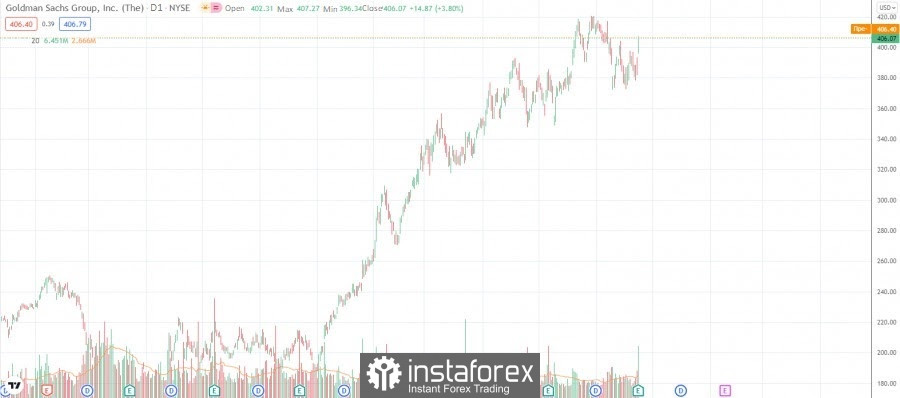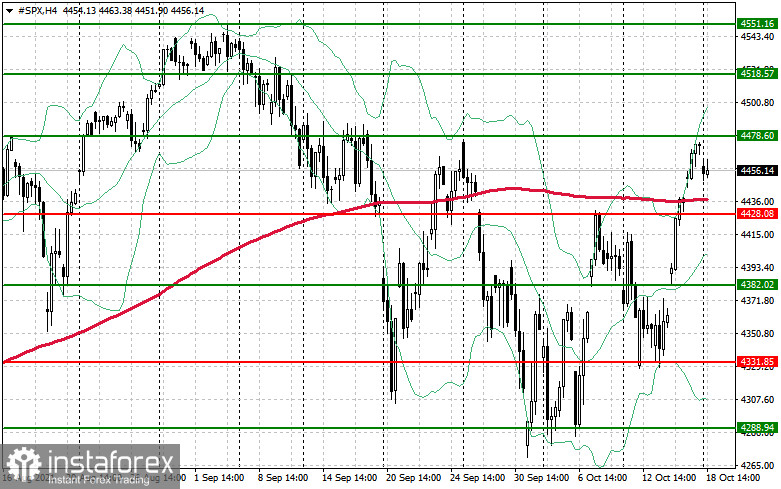Strong gains in the US stock market at the end of last week indicate a good quarterly earnings season for US companies. The Dow rose 382 points on Friday, ending the week with a 1.58% gain, its best week since June. The S&P 500 rose 1.82% last week, its best week since July, while the Nasdaq Composite posted its best week since late August, gaining 2.18%.
Major stock index futures sank slightly on Monday, October 18, while bond yields surged as rising energy prices fueled fears of high inflation, fueling expectations for an early U.S. monetary tightening. Dow Jones Industrial Average futures contracts fell 105 points, or 0.3%. S&P 500 futures lost 0.3%, while Nasdaq 100 futures fell 0.4%.

There is some negative news on the market due to reports on economic activity in China, which in the 3rd quarter did not meet the expectations of economists. According to the data, GDP grew by 4.9% per annum, which is less than the expected growth of 5.3%. Industrial production in China last month also fell short of expectations.
As I noted above, the yield on 10-year Treasury bonds again exceeded 1.61% and all because of fears of a more abrupt change in the course of the Fed's policy. This is bad news for companies from the technology sector, as investors are moving away from growth stocks in favor of more valuable companies. However, this negative is offset by strong profit and loss statements of companies. The results obtained last week could be a good foundation for a new bullish rally by the end of the year.
The banking and financial sector is well supported. Last week's reports from key US banks have delighted investors. Strong economic data also boosted stocks. US retail sales rose 0.7% in September, while economists had expected a 0.2% decline. This suggests that the consumer sector looks much stronger than what was expected ahead of the holiday season.
This week awaits reports from Netflix, Johnson & Johnson, United Airlines, and Procter & Gamble, as well as Tesla, Verizon, and IBM. This should further shake up the market and give it a boost – hopefully bullish.
Now let's quickly run through the premarket and the news background:
Disney shares lost 1.6% in the premarket after Barclays downgraded the stock due to a revision of the forecast, according to which the growth in the number of subscribers to streaming services will slow down in the near future.
One of the companies in the pharmaceutical sector is among the leaders of the fall. Revance Therapeutics shares fell 33.2% in premarket trading after the FDA refused to approve an injectable wrinkle treatment, noting the shortcomings of production facilities after an FDA inspection. According to experts, these injections are now being considered as a possible competitor to botox.
Netflix, which is due to report tomorrow, said it estimates the gross of its hit TV series "Squid Game" at nearly $900 million. The production of all series cost only $21.4 million. The company's shares did not react in any way to the distribution of the internal document.
Philips reported weaker sales in the third quarter of this year, which were below expectations. Philips has been hit hard by the recall of respirators and a global shortage of electronic components. The company's securities fell by 2.1% in the premarket.

Finally, I would like to note the news from Goldman Sachs. The company has received regulatory approval from China to buy out a 49% stake in the local securities division. Goldman does not disclose exactly how much it had to pay for 49% of the shares. Premarket shares jumped 2.6%.

As for the technical picture of the S&P 500 index:
Difficulties are observed in the resistance area of $4,478. A break in this range will lead to a larger movement of the trading instrument up to the area of $4,518 and $4,555, where the bulls will again face more serious problems. If it is not possible to get above the range of $4,478, a downward correction to the area of $4,428 and $ 4,382 levels is not excluded. There, at more attractive prices, it will again be possible to observe an increase in activity on the part of buyers. The main focus this week, as I noted above, will be the reports of large companies included in the main index.





















